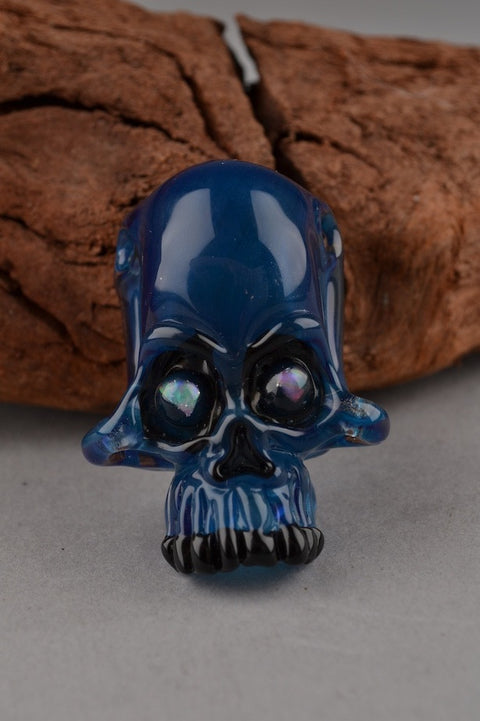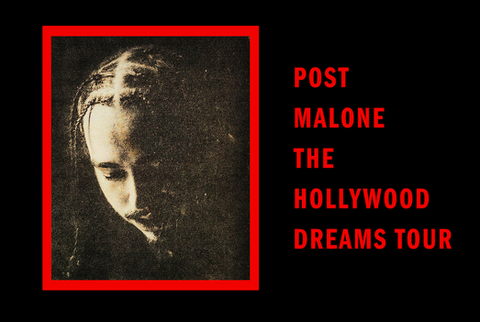
ORIGINAL INTERVIEW WAS 4 YEARS AGO TODAY!
Look at how far AKM has progressed over the years!
AKM interview by - JH
AKM and I sat down as Hurricane Sandy made landfall to discuss how he got into glassblowing and what's he currently up to.
JH: When did you first discover your desire to create?
AKM: Creating stuff has been something I've done since I was a kid. I've always made stuff, like bows and arrows with my dad, just simple things. My grandfather made pocket knifes on his spare time. So I've always kind of been intrigued and interested with building things. I was wood working real young, building skate ramps and stuff like that. It was in high school when I started blowing glass and it really settled in as something I wanted to pursue.
JH: Was that something you picked up in school or outside of school?
AKM: I was just kind of lucky. You know my dad was a big influence on me with building things and stuff like that. He's a really good woodworker and one year as a birthday gift from my mother, she signed him up for some glassblowing classes. I was instantly intrigued. I didn't even know that was an option for something I could even try. You know? I didn't know how you got into it. I was like, I want to do that real bad. So as a gift, they signed me up for some glassblowing classes and it was on! Since then I've been in love with it. I went back for more (classes). I applied at colleges that had glassblowing programs, because I knew I wanted to pursue that. That's why I chose VCU.
JH: How do you feel your experience at VCU has helped you in your work? I
AKM: It's hard to say. I feel like I have become a very well rounded artist. I'm not solely specialized in making a production line or even nice art type stuff. I know a lot about art history. I know a lot about other mediums like wood working and metal smithing. I've taken painting classes and sculpture classes. I feel like I've dabbled in so many different fields that I'm very multi-faceted. If I wanted to make a mixed media piece of art like in my Highpoint Gallery show where there's worked wood and glass components, that's something I could achieve by myself. Another artist may need to collaborate or commission someone to make them a stand or the other half of the project that they need. Whereas myself, if I can't do it or haven't done it, I can learn to do it. I can make it happen.
JH: From looking at your work over the years, I've taken notice that you make a lot of the colors you use. Is that something you picked up in school?
AKM: Going through the art program, receiving a bachelor's in fine arts, you are forced to be multi-faceted. They make you take an art foundation program where you have to study color theory, where you have to study drawing. The color theory classes 100% apply in every day glassblowing for me. In the painting classes, one of the things they told me was to never take your paint and squirt it right out the tube and paint with it. Always mix it with another color and make it a unique color, because there are people out there that will look at that and say: That's canary yellow or that's cadmium red, or that's this, that, the other. But if you mix them down, it's harder to decipher. You might be able to say, that's a very warm yellow, but was it burnt umber and white? or cadmium yellow or something else and it's that, that I use a lot.
JH: Yeah, understanding color theory is definitely important.
AKM: Big time! Composition too. I love a piece, whether it's mine or someone else's that is composed properly. There are lots of different ways of doing it. Guys like JAG do it with simplicity and elegance. People like Adam G. do it with compact, tight curls. Amazing pieces with extensive amounts of work in them. And yet the compositions for both pieces work for each piece. I see these pieces that I'm like wow that's 100% cohesive. They've really thought about color theory, composition and everything in between. I think I've picked up a number of helpful things in school that any glassblower can pick up, whether they go to school or not. Just having them classically taught to me gives me an edge.
JH: Skulls and anatomy are recurring themes in your work. Where did you pick that up?
AKM: I've always loved skulls and bones and stuff since I was younger. Pirate theme you know? I tried to phase it out for a while, thinking it was kinda corny. I stopped wearing skull shirts and stuff when I was in high school. Then it came back with a passion with this popular culture. The skull and cross-bone, like everyone wanted a skull and cross-bone. In all honesty, I started making them at VCU just as something to do. Then I thought I could make it into a pipe and I started making these skull pod pipes and I took off with it. That led to making stuff like vertebrates and other types of bones. So the skeletal system has been with me since I started lamp working and pipe making and making things beyond the production level. Anatomy came with it. I was thinking one day, how do I take my work up another notch? What subject matter can I include with what I already do? And the anatomy pipe was born. I got leaps of confidence and excitement from doing that. I started working with heart a lot, also with the intention of the love people put in to collecting, making, buying and selling. The whole thing, it worked for the heart. So, they were just something that kind of came as a development of what I used to work on. I still constantly push in that direction, because it's easy to find inspiration. I'm very much intrigued with the body, it's just limitless. You can take it to a morbid level with the severed fingers that I do or you can keep it really elegant with some of the skull and bone things I make. I don't find them to be disgusting and morbid, I find them to be beautiful and elegant because they are clean. Especially the one's with the uniform color, they just look nice to me.
JH: You recently were part of a group show at the Highpoint Gallery and I saw a skull there. Could you talk about the concept behind that?
AKM: That skull is labeled "Head Piece" and is almost a human size skull, well it could be a human size I guess depending on your age. It's black and it has a bubbler shape all over it, like a Louis Vuitton pattern. I wanted to make something that appealed to masses I already sell to, the pipe art culture. I still wanted to make something that was not functional and still had an art quality about it. I had technical assistance from Egon in the hot shop to help me make that and then I took the object from there and put all this other mixed media work into it and created this "head piece". Everyone refers to these headies and cool pieces that are fully worked. They're your smoking device or something, but this is totally unsmokable and it is still heady. It drew a lot of attention and it got the desired result that I wanted. I really like it as an object and I enjoyed making it.I think everyone that checked it out had a good time with it too.
I think a lot of people are starting to push themselves into that field. I'm one of them that's trying to push themselves into this field where still I'd still be able to create this art that appeals to the people that would be buying our glassware that's functional. They can still get a painting or an object that's made by these killer artists. It's another tangible object that may not be breakable or could last longer, or could be displayed to a larger group of people, or could be accepted by someone's family. There're so many reasons why you should make a piece like that and I'm inspired by it. Chris Carlson is a big inspiration, he uses the sherlock shape a lot in his artwork that is non-functional and it's great. I love seeing that, it's definitely an inspiration.
JH: It's good to see you branch out and put your talent into something else. That's the kind of stuff I like to see, when an artist does something you don't expect. It might not be more desirable right now, but I think in the long run it'll be more desirable because of the rarity.
AKM: It's a less common thing. You can go to any number of head shops and find some AKM work, but this is something that if a store or a collector was to have it... you're right, there are only going to be but so many. They don't get made like the pipes do.
JH: Where do you draw inspiration from and what keeps you motivated as a glassblower?
AKM: I love being in nature, being outside, playing with the dog. You see a lot of things when you're outside. I love the skull and the anatomy stuff, so I look through books, I look at a lot of photographs, a lot of pictures. I also look at a lot of other glass art, primarily functional glass art. I keep in touch with what people are into and that all kind of keeps me inspired. I am about to teach a class this coming weekend at The Heat Base. I'm really looking forward to being around other glassblowers, young glassblowers and experienced glassblowers. It's really surprising how many times you're teaching someone something and they have totally blown your mind with something they have done or have shown you. You're just like, wow! I don't ever do this, and that's cool. I can show you all these things and you're still showing me something. So I'm inspired by glassblowers from experienced to inexperienced. Teaching and learning both do equal for me. Everyone has shared their knowledge with me. Whether I paid for a class or I visited someone and was just taught it. I feel like giving that back too. I'll be more than happy to teach a class paid, that's great! But if you're a learning person and you come and work with me, I won't be secretive of my work. I love to teach people. As far as motivation goes, I just love blowing glass. It really tops the cake off when you can make money at something you love. It's a job, it's hard to do sometimes. But when you turn around and look at your other options and what some other people have to do to make money… It makes you want to sit down, get back to work, and be like thank God I do this! I find myself blessed and that makes me motivated.
JH: Tell us more about the class you're teaching.
AKM: November 2nd, 3rd, and 4th 2012. It's an AKM & Elks That Run (ETR) collaboration class. We're are going to be covering a variety of techniques. From certain prep works, to double layer color work, patchwork, a variety of sculpting techniques, and in general tips and pointers on how to work well with other people. Or at least how Seth (ETR) and I work well with each other… What we think our strengths for working with each other are. We have had a number of successful collaborations that have just been to die for. We haven't been able to hold onto them. So we are going to try to teach a successful class on how to collaborate along with a lot of the techniques we both use.
JH: What do you like most and least about being an independent glassblower?
AKM: Working for yourself is tough sometimes. Keeping up with your overhead and everything like that. I always seem to make it through. Times can be tight here and there, but you get these swells of money sometimes. Especially with trade shows and stuff. You just gotta learn how to live like that. It was rockier in the beginning and it's constantly getting smoother. I hope to really refine it down to a point where I'm never stressed out about it. Going back to what I said before with what other situations I could be in and how much worse it could be. I just can't imagine doing anything else. This is something you can do at any hour of the day, whenever you want. If you need money you just go in and blow glass. You just do it. You sit down and you do it. There aren't too many jobs where you can just decide, oh hey I need money so I'm going to pop on up to the store and put in 20 hours. That's the big thing I think is great about it. It's totally up to you. You've got nobody else to like... blame.







Comments (0)
There are no comments for this article. Be the first one to leave a message!